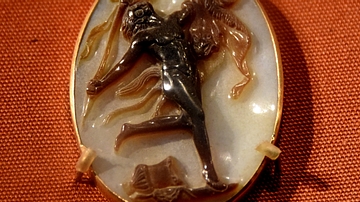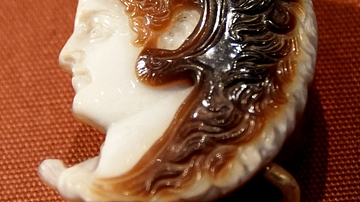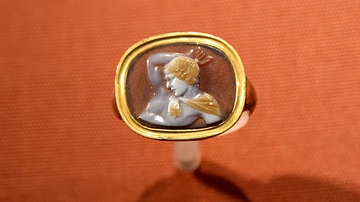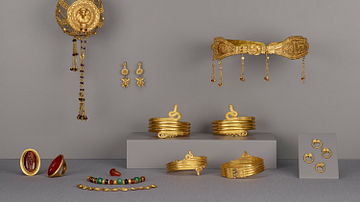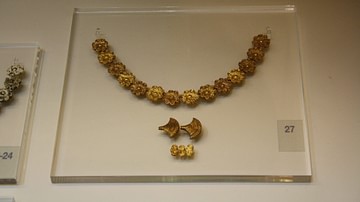Illustration
Skillful Roman cameo-carvers exploited the tonal contrast of some stones. This could be a simple two-tone contrast or a more subtle variation using all available gradations of shade. Sardonyx was particularly valued as a cameo-stone. From the Blacas Collection. Roman, 3rd century CE. (The British Museum, London).
About the Author
Cite This Work
APA Style
Amin, O. S. M. (2016, October 05). Sardonyx Cameo Showing Nonsense Greek Inscription. World History Encyclopedia. Retrieved from https://www.worldhistory.org/image/5816/sardonyx-cameo-showing-nonsense-greek-inscription/
Chicago Style
Amin, Osama Shukir Muhammed. "Sardonyx Cameo Showing Nonsense Greek Inscription." World History Encyclopedia. Last modified October 05, 2016. https://www.worldhistory.org/image/5816/sardonyx-cameo-showing-nonsense-greek-inscription/.
MLA Style
Amin, Osama Shukir Muhammed. "Sardonyx Cameo Showing Nonsense Greek Inscription." World History Encyclopedia. World History Encyclopedia, 05 Oct 2016. Web. 16 Apr 2025.



